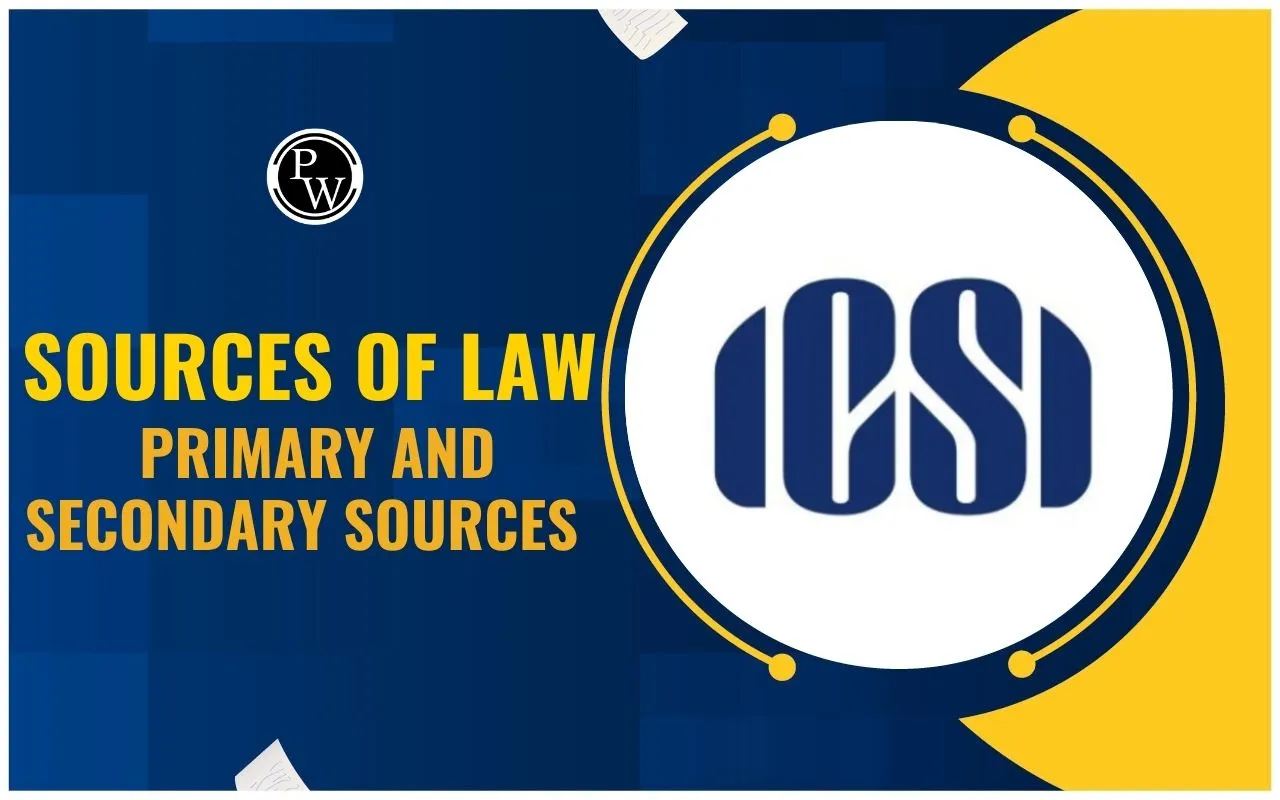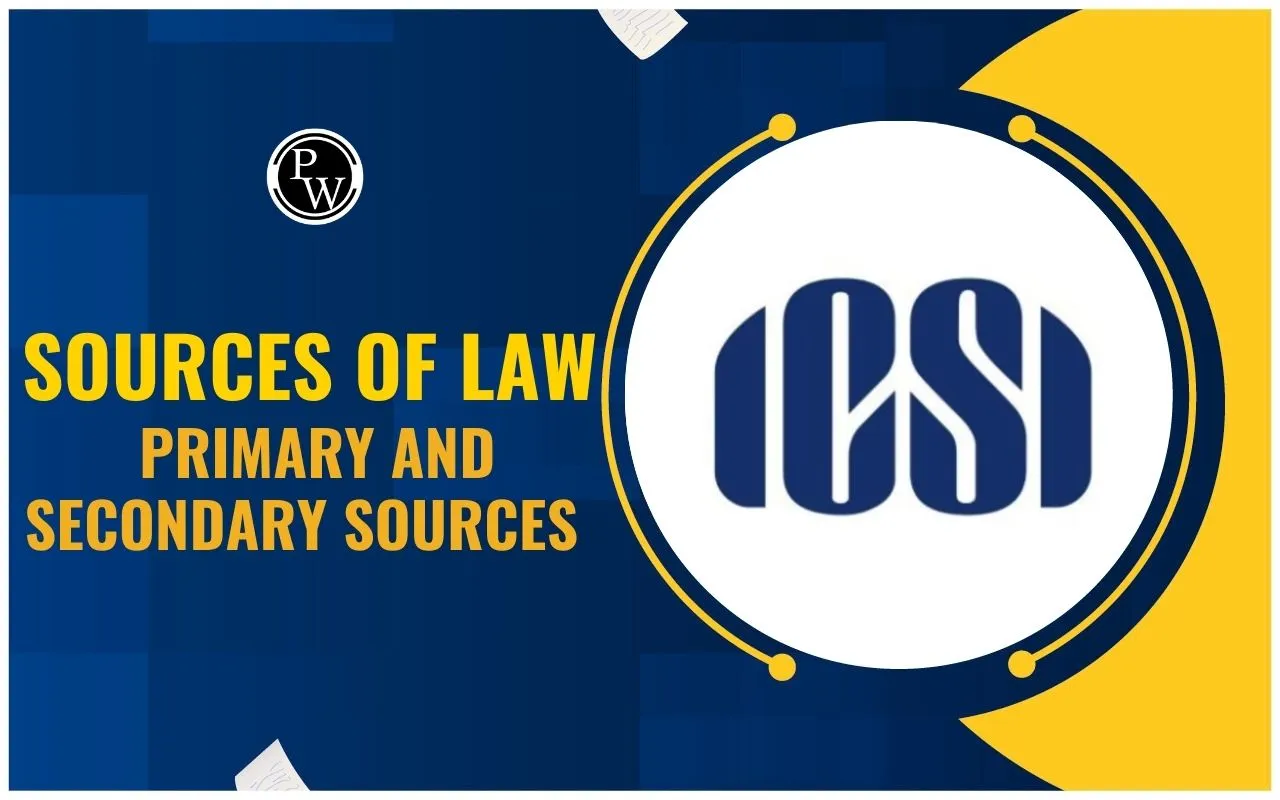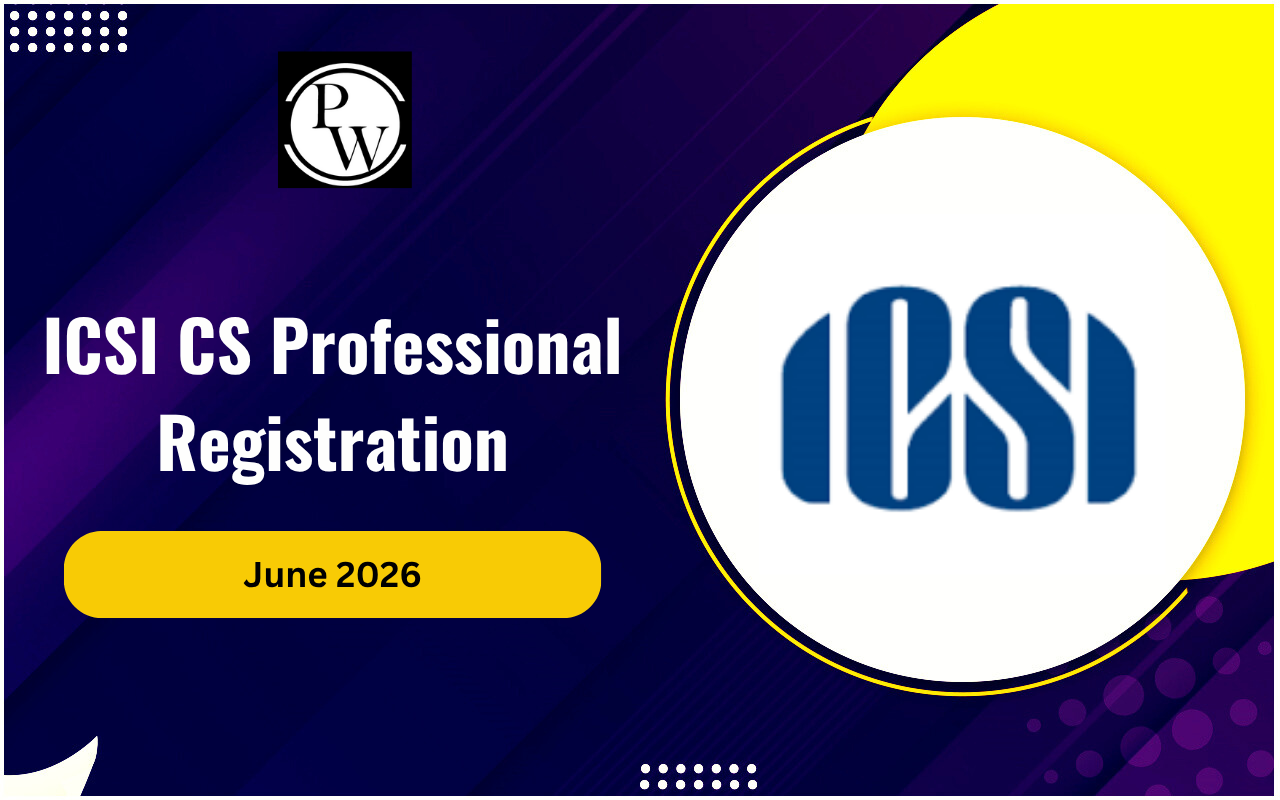

Sources of Law: Law forms the backbone of modern society, guiding behaviour, regulating relationships, and ensuring order. The origins and reasoning behind law's existence, however, are deeply philosophical and vary widely across different legal theories and schools of thought. This article delves into the major sources of law for the CS Exam , examining how various doctrines and theories contribute to our understanding and application of law today.
Natural School of Law
The Natural School of Law believes that law should be based on inherent moral principles that exist independently of enacted laws. Proponents, like St. Thomas Aquinas, argue that natural law is universal and can be discovered through reason. This school holds that for a law to be valid, it must conform to these moral standards. The significance of natural law lies in its challenge to the validity of laws that conflict with moral human nature, emphasizing a higher, often spiritual, standard.Significance of Law
The law is essential for society as it helps maintain order, protect individual rights, resolve disputes, and establish standards for social and governmental operations. By setting clear guidelines and expectations, the law enables societal stability and predictability, making it easier to allocate resources and interact fairly and efficiently.Sources of Law
Law derives from multiple sources, categorized generally into written (statutes, codes, regulations) and unwritten laws (case law, common law). Additionally, international treaties and agreements contribute to legal standards across borders. Understanding the diversity of these sources is essential for comprehending how different jurisdictions adopt and implement laws.Also Check: Company Law, Corporate Governance and Legal Compliance in India
Primary and Secondary Sources of Law
Understanding the difference between primary and secondary sources of law is crucial for effectively navigating the legal landscape. These sources are fundamental to the study and practice of law, each serving specific roles in legal research and application.Primary Sources of Law
Primary sources of law are the official, authoritative legal materials that directly establish legal obligations and rights. These include:Statutes and Legislation: Enacted by legislative bodies, statutes are the written laws that prescribe and prohibit various actions. They serve as the primary building blocks of statutory law in a jurisdiction.
Case Law: Made up of judicial opinions and rulings, case law is a critical source of law in common law jurisdictions. Courts interpret statutes, regulations, and constitutional provisions, and their judgments are binding precedents under the doctrine of stare decisis.
Constitutions: These are the fundamental legal documents that outline the structure of government, delineate the powers of various government entities, and provide key civil rights and liberties. Constitutions are the supreme law of the land in many countries, meaning that any law conflicting with the constitution is deemed invalid.
Regulations and Administrative Rules: Issued by executive branch agencies, these rules and regulations have the force of law and affect the rights of individuals. They provide details necessary to implement and enforce statutory laws.
Secondary Sources of Law
Secondary sources of law are commentaries, analyses, and restatements of primary laws, used to clarify or explain legal principles and rules. They include:- Legal Textbooks and Treatises: Scholarly sources that provide in-depth discussion and analysis on specific areas of law. They are often used to gain a broader understanding of a legal topic.
- Law Review Articles: Written by legal scholars or law students, these articles provide critiques, clarifications, and in-depth analysis of legal issues, often influencing how laws are interpreted and applied.
- Legal Dictionaries and Encyclopedias: These resources provide definitions of legal terms and concepts, helping to clarify the language used in primary sources.
- Digests and Annotations: Compilations that summarize case law and statutes, helping legal professionals identify relevant precedents and statutory provisions more quickly.
Custom as a Source of Law
Custom plays a pivotal role as a source of law, particularly in systems where written statutes are not exhaustive or during periods before written laws were formalized.Definition and Significance
"Custom" refers to practices or patterns of behaviour that have been established for so long that they carry the same weight as law. Custom becomes a source of law when it is recognized by the courts and is consistently followed by the people within a specific jurisdiction for a significant time.Requirements for Custom to be Law
For a custom to attain the force of law, generally, it must be:- Ancient: It must have been practised consistently for a long enough period that people consider it obligatory, not merely habitual.
- Reasonable: The custom must be reasonable; it cannot be arbitrary or against the principles of justice.
- Continuous: It must have been followed continuously, without interruption.
- Certain: The custom must be clear and well-defined, not vague or ambiguous.
- Not Contrary to Statute: It must not conflict with any statutory law or constitutional provisions.
Austin’s Command Theory of Law
Proposed by John Austin, the command theory posits that law is a command issued by a sovereign backed by sanctions in case of non-compliance. Austin's theory emphasizes law as a directive from a higher authority rather than a moral consensus, defining legal obligations in terms of the presence of a coercive threat, thereby separating legal concepts from ethical norms.Kelsen’s Pure Theory
Hans Kelsen introduced the Pure Theory of Law, which seeks to define law as a hierarchy of norms, devoid of any sociological, psychological, or ethical interpretations. Kelsen’s theory positions law as a system of norms, where each lower norm is created by a higher one, culminating in a fundamental "grundnorm" (basic norm) that gives legitimacy to a legal system.Bentham’s Theory of Law
Jeremy Bentham, an English philosopher and jurist, argued that law should be used as an instrument for social welfare, emphasizing utility and the "greatest happiness principle." Bentham's utilitarian approach suggests that laws should be crafted based on their ability to produce the greatest good for the greatest number, promoting laws as tools for societal happiness and utility maximization.Role in Legal Systems
In many legal systems, custom serves as a significant source of law, particularly in areas not covered by statute. In common law jurisdictions, custom can influence the development of case law. In civil law systems, while the written code is typically comprehensive, custom may fill gaps or influence interpretation. Custom also plays a critical role in international law and indigenous legal systems, where traditions can guide legal reasoning and judicial decisions. The sources of law and its various theories provide a rich tapestry that defines the legal landscape. From natural law's moral underpinnings to Austin's authoritative commands, Kelsen’s normative layers, and Bentham’s utilitarian principles, each theory contributes uniquely to how laws are understood, interpreted, and applied. This diversity ensures that the legal system remains robust, adaptable, and equipped to serve justice in an ever-evolving world.
Join PW CS Online Courses and build a strong foundation in corporate laws and governance with structured learning and dedicated support.
Sources of Law FAQs
What are the major sources of law?
What is the significance of law in society?
What are primary and secondary sources of law?
How does custom function as a source of law?
What are some key legal theories?













